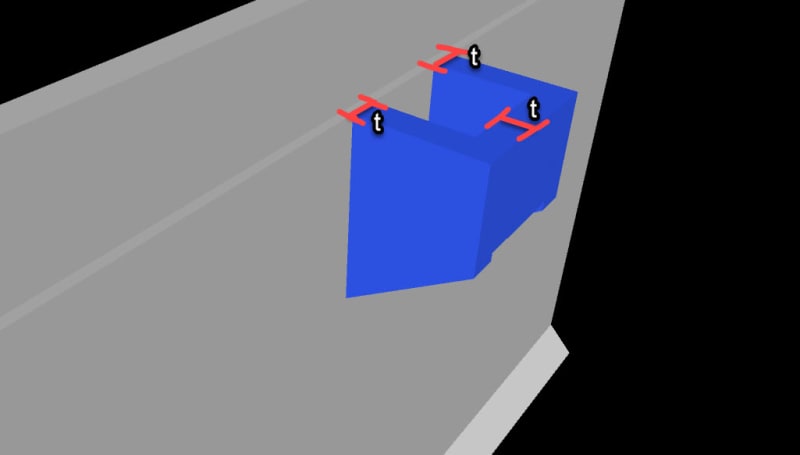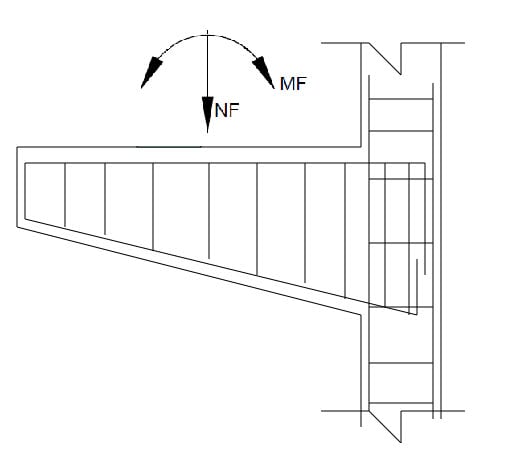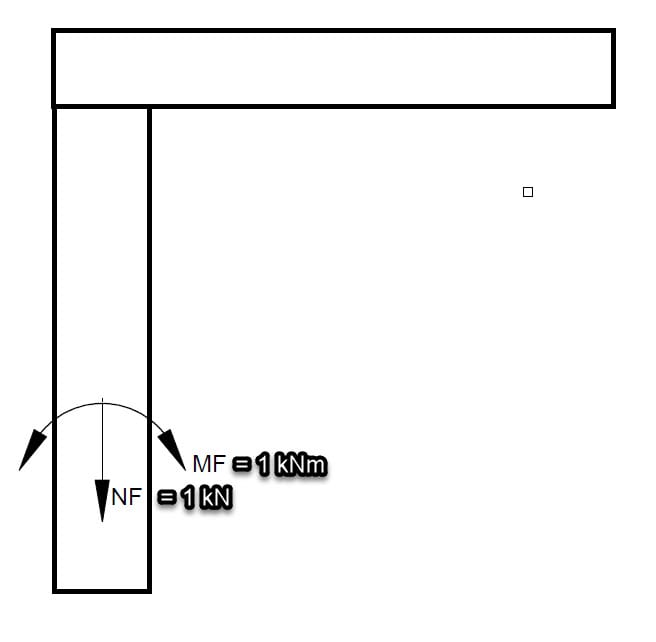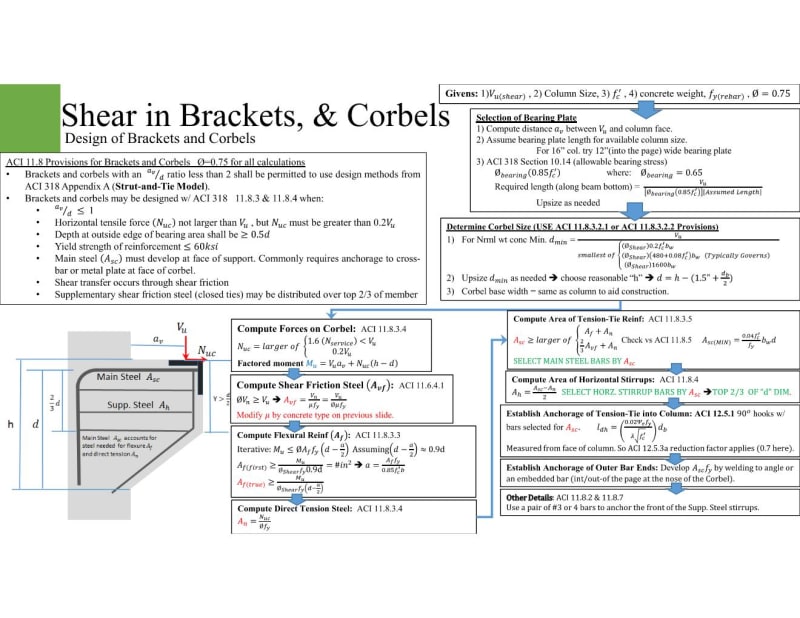bojoka4052
Mechanical
- Oct 8, 2021
- 108
I have this little concrete piece attached to a vertical wall, for which I need to find the thickness "t", which is the same for all the walls that make up the highlighted structure:

The only information I have is the moment and normal force that it will have to carry, and that the reinforcement will have to be approximately similar to a fixed cantilever beam:

To find thickness of walls, where should I start? Should I find the necessary reinforcement to carry the load, and then adjust the thickness of the walls accordingly so that the reinforcement fits? Are there any examples of this, because I could not find it online. It does not have to be exact, I can do with a rough estimate.

The only information I have is the moment and normal force that it will have to carry, and that the reinforcement will have to be approximately similar to a fixed cantilever beam:

To find thickness of walls, where should I start? Should I find the necessary reinforcement to carry the load, and then adjust the thickness of the walls accordingly so that the reinforcement fits? Are there any examples of this, because I could not find it online. It does not have to be exact, I can do with a rough estimate.




![[bomb] [bomb] [bomb]](/data/assets/smilies/bomb.gif)